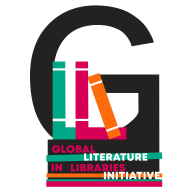Building with the Sunlit Mind
by Zackary Sholem Berger

Ode to the Dove: A Yiddish Poem by Abraham Sutzkever
By Avrom Sutzkever
Translated by Zackary Sholem Berger
Illustrated by Liora Ostroff
Publisher: Ben Yehuda Press (January 27, 2023)
ISBN-10: 1953829503
ISBN-13: 978-1953829504
One of the greatest Jewish poets of the 20th century, Avrom Sutzkever—who began his career in Vilnius (then Poland), became a voice and a witness to destruction during the Holocaust, and spent his last decades in Israel—is a poet of many phases. Reading his earliest works makes possible a more informed acquaintance with his later works.
In particular, his Ode to the Dove, published in the 1950s, is the voice of a younger poet who has been through hell and been called to a prophetic mode. This in itself is not novel; such was the voice, grosso modo, adopted by a number of postwar Yiddish poets, from Kadya Molodowsky to Yankev Glatshteyn.
But Sutzkever’s poetic voice in Ode to the Dove is—a boy’s, who is inspired by, met by a bird, in his childhood home. It is allegory made avian, it is flight into a receptive universe of colors, nature, and wings. There are 10 cantos, and each of them is accompanied by an illustration by Baltimore artist and Jewish educator Liora Ostroff. The combination of the original Yiddish, my translation, and the eye-opening illustrations brings the work from the realm of the allegorical into the visual.
The earlier Sutzkever is a visual poet: the snow-covered vistas of Sibir (“Siberia”) and the sewers of Geheymshtot (“Secret City”). The later Sutzkever is a philosophical poet, the author of philosophical lyrics about life, change, death, and God in the Diary Poems (all of these works will be most familiar to English readers in the translations by Benjamin and Barbara Harshav). The “Ode to the Dove” is a bridge between the two, and its final charge (“build and build the temple, build with a sunlit mind”) uses the built environment (human civilization) as an objective correlative of amor intellectualis. This is an important stop on Sutzkever’s poetic-prophetic road.
***
Liora Ostroff is a Baltimore-based painter whose work explores themes such as queerness, Jewishness, violence, and the idiosyncrasies of life in Baltimore. Her community at Hinenu: The Baltimore Justice Shtiebl nourishes her art practice and has inspired her to explore Jewish notions of justice and art via collaborative writing and performance. She graduated from the Maryland Institute College of Art in 2016 with a BFA in painting.
Zackary Sholem Berger lives multiple literary lives. He is a poet and translator working in (as well as between) Yiddish, Hebrew, and English. His work has appeared in multiple venues, including Poetry magazine, the Yiddish Forward, and Asymptote; themes of his verse range from the philosophical and medical to the immediate problems of his adopted city Baltimore. In the Yiddish world he might be best known as a regular contributor to the Forverts and the translator of Curious George and Dr. Seuss into Yiddish. He edited and translated Sutzkever: Essential Prose published by White Goat Press.
Avrom Sutzkever, one of the greatest Yiddish poets of the 20th century, became well known in the youthful, prewar literary culture of Jewish Vilna. He was witness and resistance fighter during the Holocaust, writing epic, lyric, and narrative works about tragedy and its aftermath, famously testifying at the Nuremberg trials. He immigrated to Palestine in 1947. There he founded Di Goldene Keyt, which became the most prestigious postwar Yiddish literary journal, bearing aloft the torch of high Yiddish literary culture.
LINKS:
Purchase the book:
Read this review.
#YiddishLitMonth is curated by Madeleine Cohen. Mindl is academic director of the Yiddish Book Center in Amherst, MA, where she directs the Yiddish translation fellowship and is translation editor of the Center’s online translation series. Mindl has a PhD in comparative literature from UC Berkeley. She is a visiting lecturer in Jewish Studies at Mount Holyoke College and president of the board of directors of In geveb: A Journal of Yiddish Studies.

